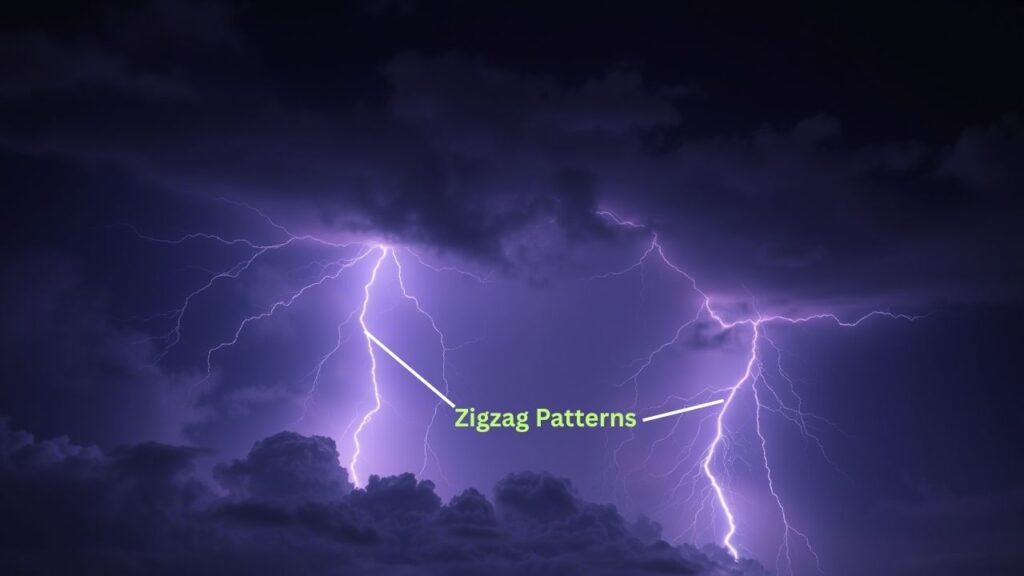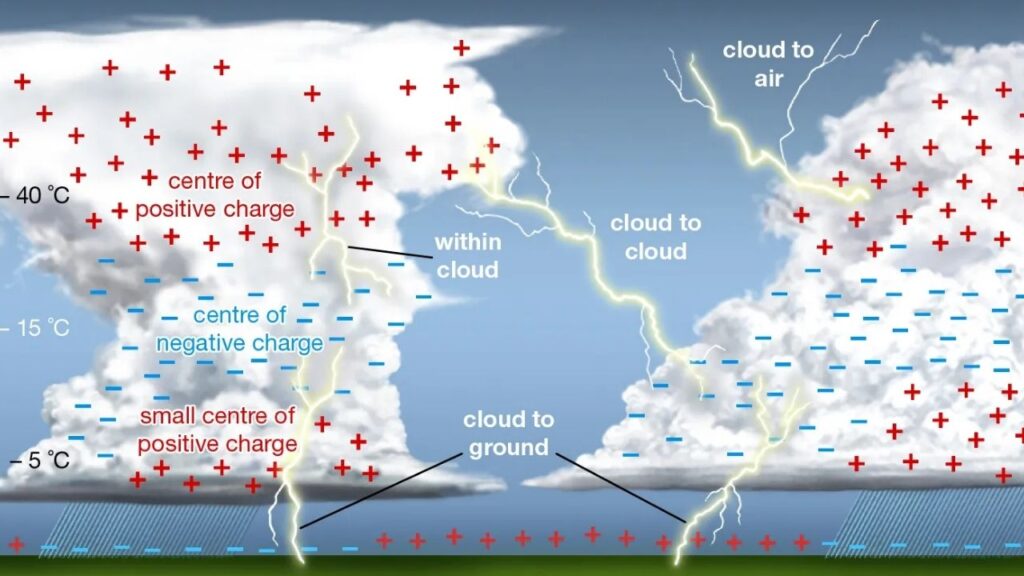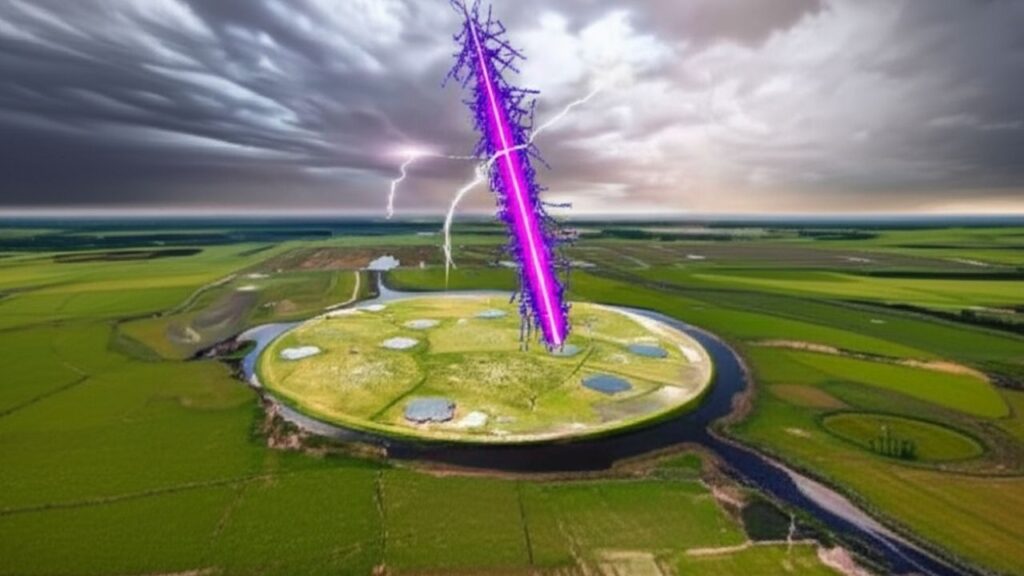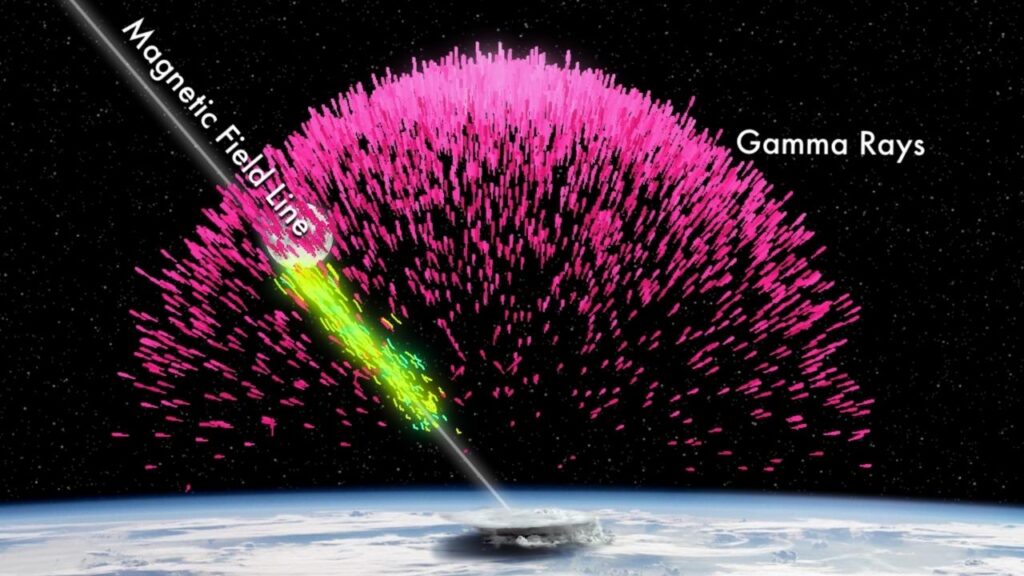Lightning has captivated people for centuries with its brilliant flashes and thunderous booms. Yet, the precise way lightning begins and releases such immense energy has long been a mystery. Now, thanks to groundbreaking research recently unveiled in 2025, scientists have finally cracked the code of lightning initiation. This discovery not only transforms our understanding of lightning but also links it to rare, energetic phenomena like terrestrial gamma-ray flashes (TGFs).

This article will guide you through the latest scientific breakthroughs on lightning—explaining the key ideas clearly enough for young readers while also providing deeper insights useful for professionals in atmospheric and electrical sciences.
Table of Contents
Scientists Finally Solve the Mystery of Lightning
| Key Highlight | Details |
|---|---|
| Lightning Trigger | Strong electric fields inside thunderclouds accelerate electrons, causing collisions with air molecules. |
| Electron Avalanche | Accelerated electrons create a cascade (avalanche) of more electrons and emit X-rays and gamma rays. |
| Terrestrial Gamma-Ray Flashes (TGFs) | Rare bursts of gamma rays produced just before lightning strikes; now detected on the ground in real-time. |
| Lightning Path Shape | Zigzag patterns explained by singlet-delta metastable oxygen molecules influencing propagation. |
| Scientific Leaders | Professor Victor Pasko (Penn State), University of Osaka research team, Australian physicists studying zigzags. |
| Recent Publications | Key studies published in 2025 in leading geophysical journals. |
| Professional Reference | For more detailed info, visit Official Penn State Lightning Research |
The scientific breakthroughs of 2025 have transformed our understanding of lightning from a mysterious natural event to a detailed, high-energy chain reaction involving electrons, electric fields, cosmic rays, and gamma rays. For the first time, scientists have clearly shown how lightning begins deep inside thunderclouds, how zigzag lightning paths form, and how lightning is intimately connected to terrestrial gamma-ray flashes.
This new knowledge not only advances atmospheric science but also offers practical benefits in safety, weather forecasting, and space-weather research.
Understanding Lightning: From Mystery to Science
Lightning is a massive electrical discharge in the atmosphere, but until recently, scientists struggled to explain exactly how it starts. New research reveals the detailed chain of events inside thunderclouds that triggers lightning.
What Starts Lightning?
Thunderclouds build up strong electric fields through the separation of electrical charges—positive charges tend to gather at the top of clouds, while negatives gather at the bottom. These electric fields accelerate tiny charged particles called electrons to high speeds. As these electrons slam into nitrogen and oxygen molecules in the atmosphere, they produce X-rays and knock loose even more electrons.

This process rapidly multiplies through a chain reaction known as an electron avalanche, sending a rush of high-energy photons (particles of light) that helps ignite the lightning strike visible to us.
Cosmic Rays: The Invisible Start
Cosmic rays, which are high-energy particles from outer space constantly striking Earth, create the very first electrons that get accelerated in thunderstorms. This explains why cosmic rays play a crucial role in seeding the electron avalanches that spark lightning, something scientists had long suspected but only recently confirmed quantitatively.

Why Does Lightning Zigzag?
Another puzzle solved by recent studies is why lightning often takes a stepped, zigzag path as it travels from cloud to ground. Australian researchers discovered that singlet-delta metastable oxygen molecules interact at the molecular level with the initial lightning leaders, making the path jump in discrete steps rather than a smooth line, creating the classic jagged pattern.
Lightning and Terrestrial Gamma-Ray Flashes (TGFs)
One of the most astonishing discoveries linked to lightning is the detection of terrestrial gamma-ray flashes (TGFs). These are extremely brief but brilliant bursts of gamma-ray radiation produced in thunderstorms. For years, TGFs were detected only by satellites orbiting Earth, but in 2025, a team in Japan succeeded in capturing TGFs triggered by lightning using ground-based sensors for the first time.
They observed two lightning leaders—one descending from a thundercloud and one ascending from a nearby tower—collide and create an intensely concentrated electric field. This accelerated electrons nearly to the speed of light, producing the gamma-ray burst just microseconds before the lightning strike itself.

This breakthrough confirms the intimate connection between lightning initiation and these high-energy gamma-ray events, revealing that lightning is not only a powerful electrical phenomenon but also an extremely energetic particle accelerator in our atmosphere.
Practical Implications: Why Does This Matter?
Understanding how lightning forms has significant real-world benefits:
- Improved Weather Forecasting: Better knowledge of lightning initiation can refine thunderstorm prediction models and improve fire risk assessments.
- Enhanced Safety for Infrastructure: Insights into lightning’s electrical characteristics help design superior lightning protection and grounding systems for homes, buildings, and power grids.
- Aviation Safety Advances: Aircraft and pilot safety can be improved by understanding the exact nature of lightning strikes and associated high-energy bursts.
- Space-Atmosphere Science: Linking cosmic ray activity with lightning offers deeper understanding of space weather effects on Earth’s atmosphere.
A Step-by-Step Guide to How Lightning Begins
Here is a simple breakdown of the lightning initiation process based on the latest research:
Step 1: Thundercloud Formation and Charge Separation
- Warm, moist air rises, forming thunderclouds filled with ice crystals.
- Colliding ice particles cause electrical charges to separate—positive charges at the top, negative near the bottom.
- This creates strong electric fields between charged regions inside the cloud.
Step 2: Electron Acceleration
- These electric fields push electrons to very high speeds.
- Fast electrons collide with nitrogen and oxygen molecules in the air.
- The collisions produce bursts of X-rays and knock loose further electrons.
Step 3: Electron Avalanche and Photon Emission
- Secondary electrons accelerate and collide, causing a multiplying chain reaction called an electron avalanche.
- This avalanche emits intense bursts of high-energy photons like X-rays and gamma rays.
Step 4: Lightning Path Formation
- The avalanche creates a conductive “leader” path through the air.
- Metastable oxygen molecules influence the stepped, zigzag shape of the lightning channel.
Step 5: Lightning Stroke
- The leader path connects with opposite charge regions or the ground.
- An intense electrical current surges through, producing the bright lightning flash and thunder.
Step 6: Terrestrial Gamma-Ray Flash (TGF) (Sometimes)
- Just before the lightning strike, if two leaders collide, they can generate a TGF.
- These flashes are brief but extremely energetic bursts of gamma radiation.
Did Life Come From Outer Space? Scientists Say the Clues Are Adding Up
New Horizons Successfully Detects Distant Starlight in Deep Space Experiment
FAQs About Scientists Finally Solve the Mystery of Lightning
Q1: Why is lightning so powerful?
Lightning’s power comes from very strong electric fields in storms that accelerate electrons to near light speed, causing chain reactions that release huge amounts of energy as electricity, heat, light, and high-energy radiation.
Q2: Are terrestrial gamma-ray flashes dangerous to humans?
TGFs occur high in thunderclouds and last only microseconds. There is currently no evidence that they harm people on the ground, but understanding TGFs contributes to better safety for electronics and aircraft.
Q3: How do cosmic rays affect lightning frequency?
Cosmic rays provide the seed electrons essential for electron avalanches inside thunderclouds. Variations in cosmic ray activity may influence how often thunderstorms produce lightning.
Q4: Why does lightning have a zigzag shape?
The zigzag is caused by the interaction of lightning leaders with specific oxygen molecules, which make the lightning propagate in short steps instead of a straight line.
Q5: How does this research affect everyday life?
Better understanding of lightning improves weather predictions, enhances safety measures for buildings and transportation, and helps communities prepare for severe storms.



















